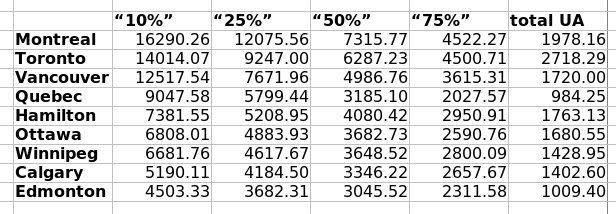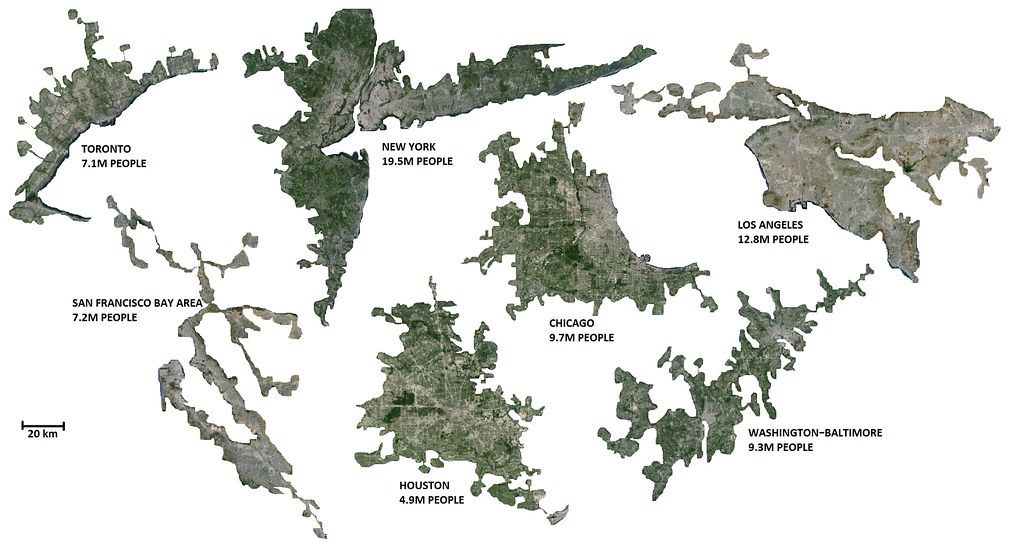Hipster Duck
Senior Member
I did renderings for Canada's cities as well. I posted it a page or two before this one. Canada's cities are far more contained. We seem to have a pretty low tolerance for exurbs. SF and LA are limited by their geographical constraints, otherwise they would've sprawled further, and even with those constraints, they're still less dense than Toronto. .
I think you underestimated LA's population. LA county has 10 million alone, and most of that population is visible in your map. You've also included pretty much all of Orange County (3 million) and San Bernardino County (2 million) and quite a bit of Riverside county (2 million).
I think it's safe to say that about 16 million people live in your coloured area for LA. I think LA is actually denser than the GTHA.






